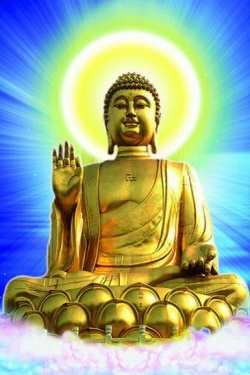Two obscurations
Two obscurations (Tib. སྒྲིབ་པ་གཉིས་, dribpa nyi; Wyl. sgrib pa gnyis) — emotional and cognitive obscurations.
- Emotional obscurations are defined according to their essence, cause and function.
In essence, they are the opposite of the six paramitas, as described in the Gyü Lama:
- "Thoughts such as avarice and so on,
- These are the emotional obscurations."
Their cause is grasping at a personal ego, or the “self of the individual”.
They function to prevent liberation from samsara.
- Cognitive obscurations are also defined according to their essence, cause and function.
In essence, they are thoughts that involve the three conceptual ‘spheres’ of subject, object and action. The Gyü Lama says:
- "Thoughts that involve the three spheres,
- These are the cognitive obscurations."
Their cause is grasping at phenomena as truly existent, or, in other words, the “self of phenomena”.
Their function is to prevent complete enlightenment.
two obscurations (Skt: dvi-avarana; Tib: drib-nyi)
Deluded mental states that block the attainment of liberation and enlightenment. They are: the grosser kind, called disturbing-thought obscurations or obscurations to liberation (Skt: kleshavarana; Tib: nyön-drib), and the subtle obscurations, the imprints left when those are purified, called obscurations to knowledge or obscurations to enlightenment (Skt: jneyavarana; Tib: she-drib).
